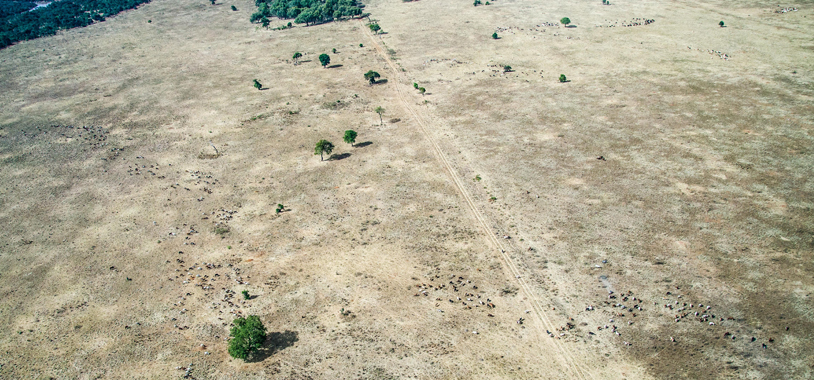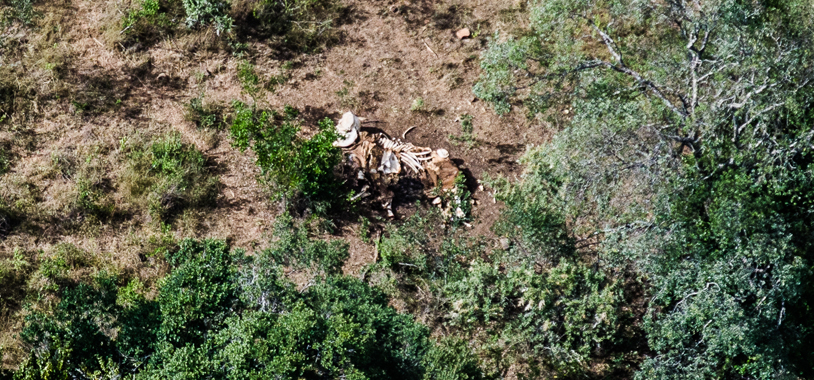In my short time here in Kenya, I have learned that wildlife conservation is reliant not only on the many eyes on the ground but also the eyes in the sky. Aerial censuses of wildlife, and especially elephants, are vital tools for assessing large-scale trends in population health. I got to jump head first into learning the ins and outs of this important conservation tool when Dr. Douglas-Hamilton asked me to represent Save the Elephants at an aerial survey of Laikipia Conservancy, a private conservancy southwest of our Samburu camp made famous by conservationist Kuki Gallman.
Counting wildlife from the air is no small task. Spotters must be trained to count extremely quickly, pilots must fly accurate transects back and forth across the counting block, and data recording and GPS marking must be done rapidly. All of these tasks must happen with the looming beast of airsickness held at bay by water, motion sickness pills if you’re lucky, and sheer will.
In the days leading up to the count, I studied manuals, made datasheets, and made sure I knew how to use a GPS and before I knew it I was winging my way to Laikipia Conservancy with a crop-dusting pilot with census experience and a Kenya Wildlife Service scientist, soaring over the arid landscape with it’s rain-carved geology.
Laikipia Conservancy was hammered by the poaching epidemic that spiked between 2012 and 2014 and concern about the area’s remaining elephants prompted the call for a local census, coordinated as a joint exercise with representatives from Save the Elephants, KWS, and the conservancy management. In addition to the elephant population, the conservancy management needed an estimate of the scale of illegal grazing occurring within their boundaries as the grass and water in the surrounding areas started to disappear. I was to play the role of the Front Seat Observer, and was responsible for recording the data from the rear seat spotters as they picked out wildlife from the bush.
We spent nearly three hours in the air, criss-crossing the reserve with eyes peeled for elephants. Early in the flight we spotted a group of four large bulls browsing on acacias, Donno our pilot banked the plane in circles above them. Not far from them a herd of cows was making their way through the brush and we hoped that they would move off to denser brush for safety. Later in the day we saw two small, very nervous family groups, obviously shaken by the buzz of the aircraft and on edge due to the growing number of livestock pushing them around the conservancy. While many elephants may have been hiding in the dense bush and the conservancy’s gullies, we counted less than 50 elephants, a disappointing number for a conservancy that used to boast a population in the hundreds. I was later heartened to hear that a pilot that had flown the area in the very early morning hours had spotted more.
In truth the only numerous thing that we counted from the air were thousands and thousands of cattle and goats. At one point, spotters were calling out herds for me to record nearly every 30 seconds, and in large numbers. The reality of the enormous conservation challenge associated with reconciling pastoralist livelihoods and protected areas for wildlife was starkly outlined for me in this count. The scale of this current inundation was astounding and with conflict between herders and elephants being a perfect recipe for new poaching incidents, I worried deeply about the safety of the elephants that still remained within the boundaries. Ideally, our count will prove to be a powerful tool for negotiating a solution to the current crisis.
Beyond the livestock issues, another element of this count left a deep impression on me. The carcasses of elephants littered the conservancy – their bones stark white against the red soil. They looked almost alien, their large skulls resting on their temples, ribs crumpled like giant toothpicks. We flew over a recently poached carcass, only two weeks old and the skin was slowly melting away into the dust, the skull exposed. Each time I’d hear the spotter call out “Old carcass,” I felt another pang of loss. I didn’t know which of these giants had been felled by bullets or more natural causes, but I hurt nonetheless. Who were they and what stories did they have to tell? We may never know.
But there was no time to grieve – only record them as another point on my data sheet, ensuring that, if nothing else, they had been accounted for. As we winged our way back to Samburu, I kept them in my mind, hoping that the remaining elephants would find secure passage to safer grounds where they can wait out this storm.



